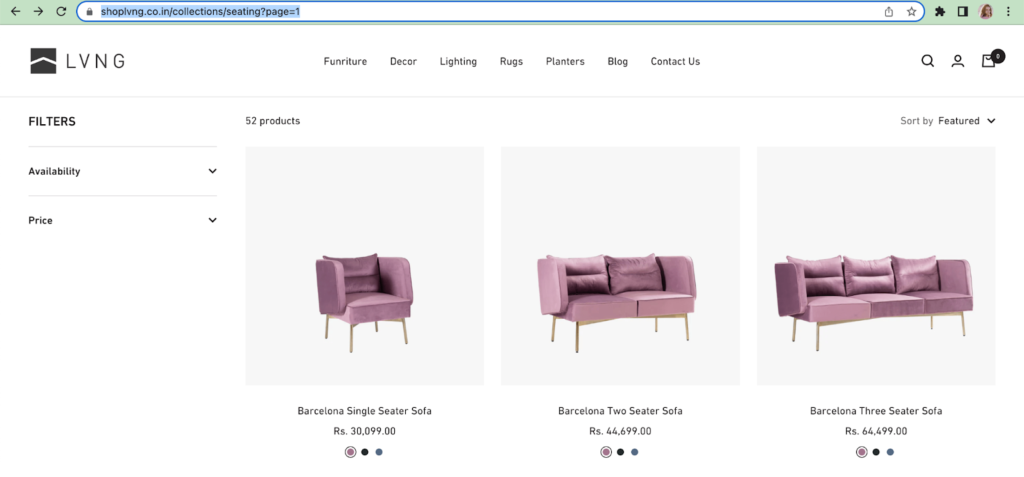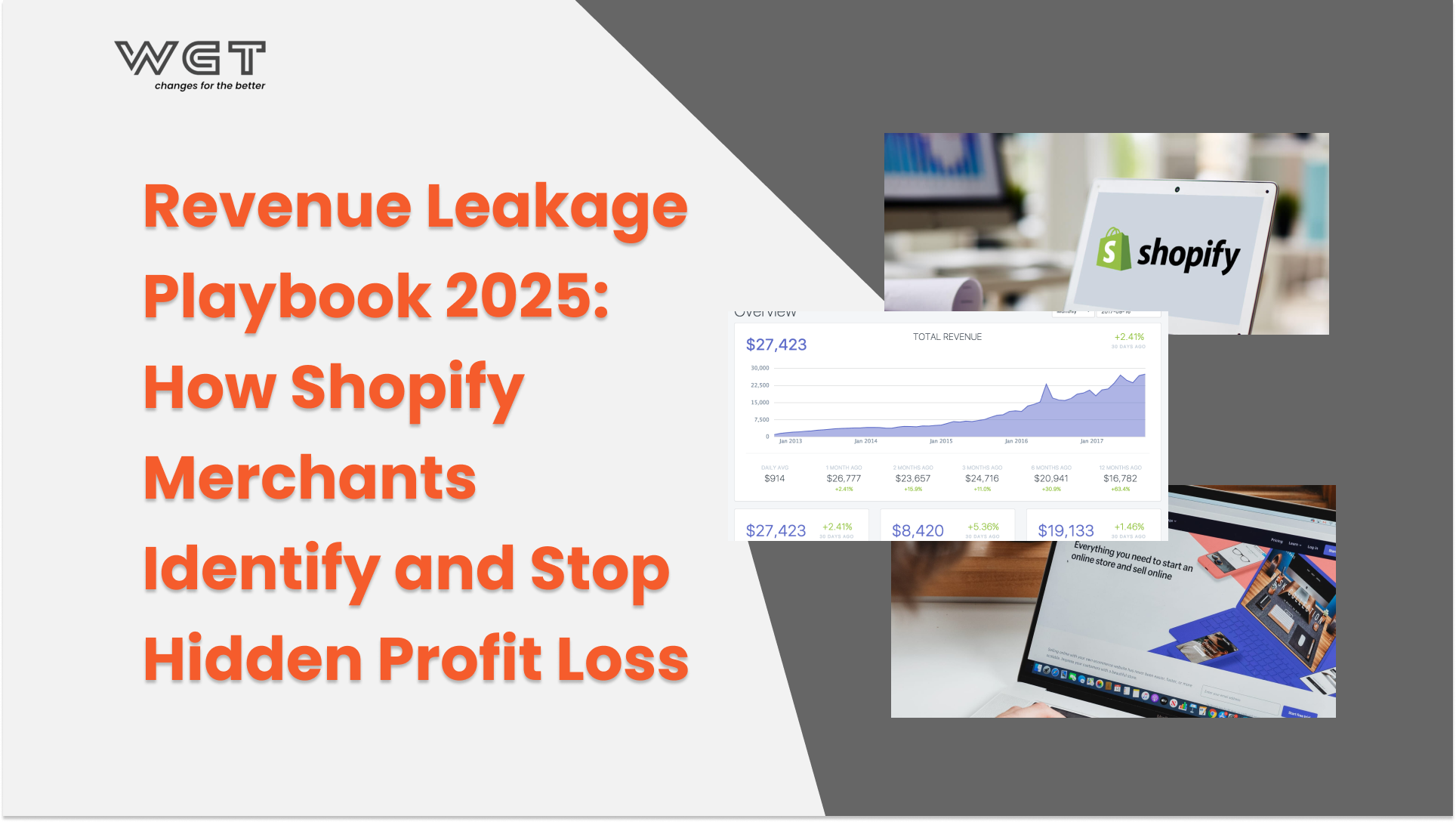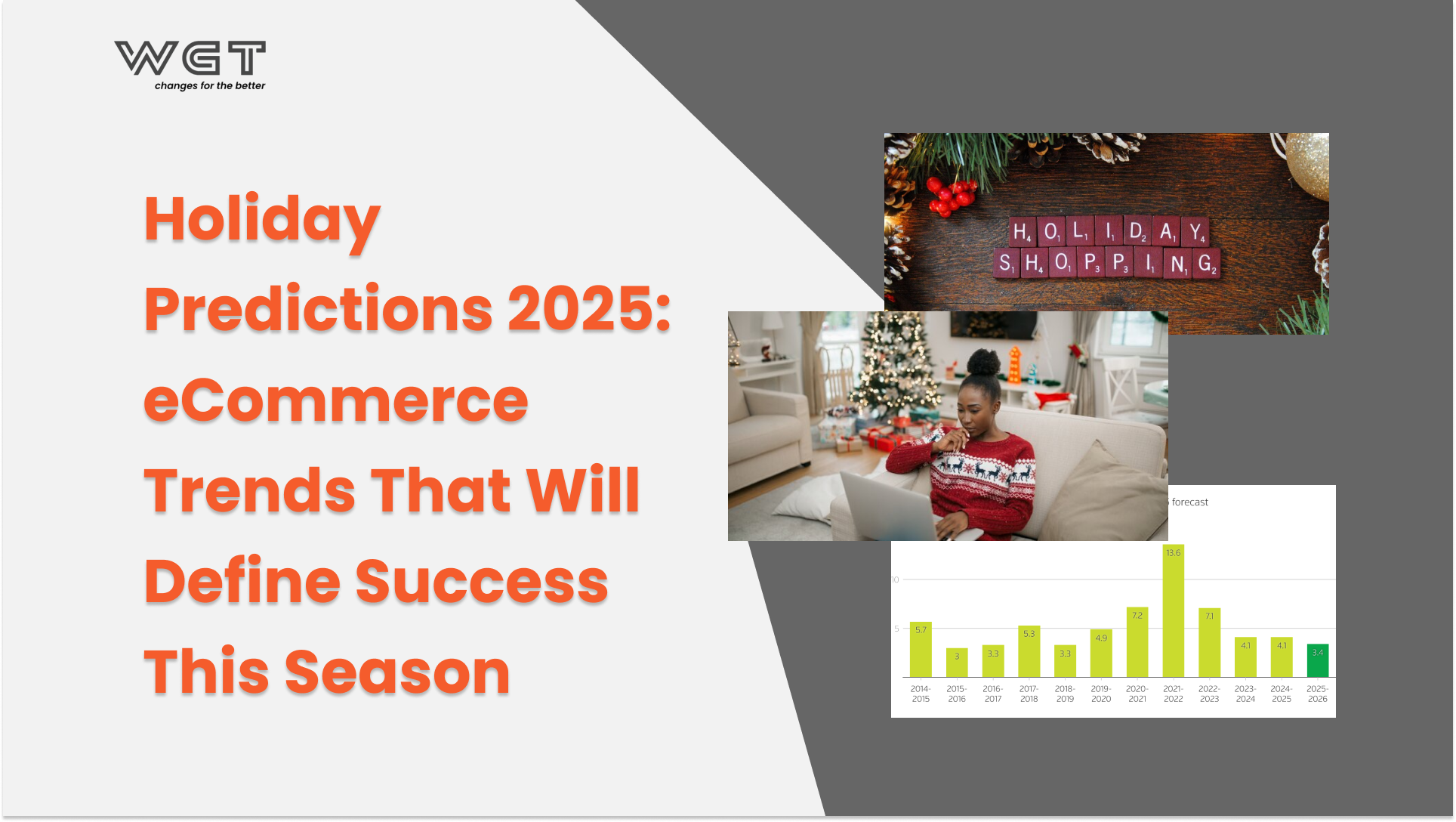Most Shopify merchants don’t fail at SEO, they fail at seeing it as a one-time setup. They install a few apps, tweak their titles, and hope Google takes care of the rest. If you’ve been searching for a clear Shopify SEO checklist that actually drives visibility and sales, this is where to start.
But true visibility isn’t built through guesswork, it’s engineered.
In today’s search landscape, SEO isn’t a marketing checkbox; it’s the infrastructure that decides whether your products are found, trusted, and bought.
Still, one question keeps coming up: “What exactly should I do and in what order to make Shopify SEO actually work?”
This playbook exists to answer that. It’s a 2025-ready framework built for clarity, control, and conversion not just clicks.
Because visibility isn’t luck. It’s a system you build: one page, one signal at a time.
Why Shopify SEO Still Matters in 2025
Every search query in 2025 passes through layers of AI-driven ranking signals, Core Web Vitals, and experience metrics that judge not just what you sell but how quickly and clearly shoppers can reach it. A strong Shopify SEO checklist ensures your store keeps up with these evolving standards.
Google’s Search Experience Updates and SGE (Search Generative Experience) have redefined visibility: pages that load faster, display structured data correctly, and deliver meaningful answers now outrank sites that only rely on keywords.
For Shopify merchants, this isn’t theory, it’s traffic and revenue in real numbers.
Recent studies show that organic search still drives 40 – 45 % of total D2C store revenue, outperforming every other unpaid channel.
Paid ads buy attention for a moment; SEO builds discoverability that compounds over time.
When campaigns pause, it’s organic discovery that keeps customers coming.
Yet many Shopify stores are built on foundations that pre-date these standards.
Legacy themes, uncompressed assets, and plugin-heavy stacks make pages crawl slower, data less readable, and rankings unstable.
That’s why the new generation of merchants treats SEO as an operational discipline, not a marketing afterthought.
Shopify’s ecosystem actually gives them an edge:
- Automatic sitemaps and clean URL structures simplify crawling.
- Built-in JSON-LD schema helps Google understand product data.
- Mobile-first themes and Shopify’s CDN deliver performance out of the box.
What turns those features into results is maintenance and intentional optimization.
SEO isn’t about chasing algorithms. It’s about building a store that’s fast, structured, and trustworthy enough to deserve organic attention.
Mini Checklist – 2025 Readiness
Before diving into technical fixes, confirm your foundation:
- Your theme is compatible with Shopify Online Store 2.0 and Core Web Vitals standards.
- Your store uses Shopify’s default sitemap and robots.txt setup (without overrides).
- You have GA4 and Search Console connected for real-time index tracking.
- You’ve reviewed third-party apps and scripts that inject unnecessary code.
If even one of these is unchecked, your SEO performance is leaking before optimization begins.
The Foundation: Build a Strong Shopify SEO Structure Before You Scale
Before optimizing content or building backlinks, every Shopify store needs a solid technical foundation.
If search engines cannot crawl or interpret your site correctly, no amount of keyword work will make a difference.
Why structure comes first
Shopify’s platform already provides an SEO-friendly baseline: automatic sitemaps, clear URL paths, and built-in canonical tags. However, these features only work as intended if your theme and apps do not interfere with them. Many stores unknowingly create obstacles for crawlers by layering redirects, duplicating content, or using non-standard URL parameters that confuse Google’s index.

The content of the page from the screenshot above (https://shoplvng.co.in/collections/seating?page=1) duplicates the content of the URL https://shoplvng.co.in/collections/seating.
Search engines reward sites that make their architecture transparent. Think of your site structure as a map. If it is well-organized, users and crawlers can reach every product in fewer clicks, understand your hierarchy, and connect relevance between pages. If it is cluttered, even great content will remain invisible.
Checklist: Crawl and index essentials
Start by validating your store’s crawl health.
- Crawl your site with tools like Ahrefs or Screaming Frog.
Identify broken internal links, redirect loops, or orphaned pages.
These issues not only waste crawl budget but also send mixed signals about site reliability. - Inspect your robots.txt file.
Shopify automatically generates one, but if you have modified it through an app or custom script, ensure that key folders like /products and /collections are not accidentally blocked. - Review your sitemap.xml.
Confirm that it lists only active URLs and does not include test pages, password-protected sections, or duplicates from old themes. - Set canonical tags properly.
Each product, variant, or collection should have a single, canonical URL.
This prevents Google from indexing multiple versions of the same content. - Use breadcrumbs and internal links strategically.
They help both users and crawlers navigate your store while passing authority between high-performing pages.
Before scaling content or campaigns, validate that each step in your Shopify SEO checklist starts with structure, crawlability, and clean internal linking.
Pro insight
When technical SEO is ignored, even minor crawl inefficiencies compound over time. One broken internal link or an outdated redirect chain can isolate entire collections from Google’s index.
A well-structured Shopify store, on the other hand, allows search engines to crawl deeper, index faster, and rank more accurately.
Before you move to content optimization, verify that every technical component aligns with how search engines discover and interpret your store.
On-Page Optimization: Speak to Customers, Signal to Google
Once your structure is solid, move to on-page optimization. This part of the Shopify SEO checklist bridges what customers read with what Google understands.
On-page SEO connects what customers read with how Google interprets relevance.
It determines whether your store appears for the right keywords, at the right time, for the right intent.
Why on-page SEO matters for Shopify merchants
In 2025, Google’s ranking systems place greater weight on clarity and context.
This means content that directly answers search intent will outperform generic keyword stuffing.
Shopify merchants often underestimate how much small changes on individual pages can improve both ranking and conversion rate. Product descriptions, titles, and headings are not just sales copy. They are data points that teach search engines what your store sells and why it matters.
When those signals are aligned, your store becomes both discoverable and persuasive.
Checklist: Key elements for effective on-page SEO
- Page titles and meta descriptions
Write titles under 60 characters that include your primary keyword and product name.
Meta descriptions should invite clicks by describing value or outcomes, not just features.
Example: “Shop sustainable linen dresses that ship fast and last longer” is more effective than “Buy linen dresses online.” - Heading hierarchy (H1, H2, H3)
Each page needs a single H1 tag that defines its topic.
Use H2 and H3 headings to group supporting content logically.
This structure helps both readers and search crawlers understand content flow. - Keyword placement and natural language
Integrate primary and secondary keywords naturally in your copy.
Focus on user intent rather than density.
Tools like Surfer SEO or Clearscope can guide balance between readability and relevance. - Internal linking
Link related products, collections, or blog posts to establish topic depth and help Google map relationships between pages.
Use descriptive anchor text that reinforces context, not generic phrases like “click here.” - Structured data markup
Shopify automatically includes product schema, but confirm that attributes such as price, availability, and reviews appear correctly in Google’s Rich Results Test.
Accurate structured data increases your chances of appearing in enhanced search features. - Image optimization
Compress all images using WebP or AVIF formats.
Write alt text that describes both content and context, which supports accessibility and strengthens SEO relevance.

Pro insight
Search engines reward clarity because it mirrors customer trust.
When your titles, content, and data are consistent, shoppers spend longer on your pages, bounce less, and convert faster.
On-page SEO is not about manipulating rankings. It is about translating the value of your products into language that both humans and algorithms can understand.
Before moving to performance optimization, audit a few of your top-selling products. If their titles, meta descriptions, and images communicate clearly, you are already halfway toward stronger search visibility.
Performance and UX SEO: When Speed Becomes a Ranking Signal
Performance and UX are essential parts of the Shopify SEO checklist for 2025, directly influencing how search engines score user experience. Google’s Core Web Vitals framework measures how quickly your page loads, how stable the layout remains, and how fast users can interact.
A slow or unstable site sends negative quality signals, reducing both ranking and conversion.
Why speed defines visibility
More than half of all online traffic now comes from mobile devices. If a page takes longer than three seconds to load, over 50 percent of users will leave before it even renders. In eCommerce, one extra second can break the sale.
It is a lost sale, a wasted ad click, and a lower Quality Score that inflates your paid campaign costs.
Shopify gives merchants strong performance tools by default, such as global CDN delivery and image optimization.
However, these advantages fade quickly when themes, apps, and scripts are poorly managed.
Many stores lose precious milliseconds to unnecessary tracking codes, oversized assets, or apps that run site-wide without purpose.
Checklist: Performance and UX priorities
- Audit your theme and apps
Remove apps that load global scripts on every page.
Replace them with lightweight alternatives or integrate their functionality directly into your theme.
Test performance after each removal to confirm improvements. - Optimize Core Web Vitals
- Largest Contentful Paint (LCP): below 2.5 seconds
- Interaction to Next Paint (INP): under 200 milliseconds
- Cumulative Layout Shift (CLS): below 0.1
Tools like PageSpeed Insights or Lighthouse will help you monitor these metrics.

- Compress and lazy-load assets
Convert images to WebP format, minify CSS and JavaScript, and defer non-critical scripts until after page load.
Enable lazy-loading for product galleries, videos, and review widgets. - Simplify checkout flow
Reduce unnecessary form fields and avoid adding marketing scripts inside checkout.
Shopify Plus users can use Shopify Functions to create targeted offers without slowing performance. - Test mobile experience
Use Chrome DevTools or WebPageTest to simulate 4G or slower connections. Evaluate how the store performs on real-world conditions, not just high-speed office networks.
Pro insight
Speed is not a design detail; it is a trust signal.
When pages respond instantly, customers feel confident and stay longer.
When they hesitate, they leave without converting.
Performance optimization directly amplifies every other part of SEO.
Faster pages are crawled more often, indexed more accurately, and ranked higher.
Before optimizing your content further, verify that your site delivers information as fast as your audience expects.
Content Velocity: Build Depth, Not Just Pages
SEO success in 2025 depends on more than publishing frequency.
Google’s evolving algorithms reward topical depth and expertise over volume.
For Shopify merchants, this means building clusters of content that strengthen a single theme rather than scattering unrelated blog posts.
Why depth outperforms quantity
When multiple pages across your store and blog consistently address the same customer problem, Google recognizes your domain as a trusted resource.
This concept, known as topic authority, now influences ranking as much as backlinks once did.
Creating content that connects product education, buying intent, and post-purchase guidance helps users stay within your ecosystem longer.
It also signals relevance across every stage of the funnel.
Checklist: Content velocity and structure
- Define your content clusters
Identify three to five core topics that align with your products and audience intent.
For example, a skincare brand might build clusters around “routine building,” “ingredient education,” and “seasonal skincare.” - Plan internal linking intentionally
Link related posts, guides, and collection pages to form a web of content around each topic.
This allows authority to flow from high-performing pages to newer ones, accelerating indexation. - Update and refresh top-performing posts
Instead of constantly publishing new blogs, revisit older articles and enrich them with new data or visuals.
Google values freshness when it adds meaning, not when it inflates content count. - Leverage multiple formats
Expand beyond text by embedding short videos, infographics, or downloadable guides.
These assets increase engagement and dwell time, both of which strengthen SEO signals. - Measure results by impact, not count
Track which topics drive organic traffic and conversions through GA4 and Search Console.
A small number of well-structured articles that dominate a niche outperform dozens of generic posts.
Consistent, topic-focused content drives compounding growth. Depth outperforms volume every time.
Pro insight
Strong SEO content does not chase keywords.
It answers questions your customers are already asking and supports their next decision.
Every article, guide, or product page should help readers move one step closer to a purchase.
Before writing your next blog post, ask a simple question:
Does it deepen your authority around a core theme, or is it just another page?
If it is the latter, it is time to rebuild your strategy around clarity, connection, and depth.
Updating your Shopify SEO checklist regularly helps ensure your content clusters stay relevant, authoritative, and aligned with audience intent.
Tracking and Validation: Turn SEO Into a Measurable System
Optimization is incomplete without measurement.
Many merchants focus heavily on implementation but rarely track the results beyond keyword positions.
Effective SEO management requires visibility into what is working, what is lagging, and how those signals translate into revenue.
Why tracking defines success
Shopify SEO should operate like any other growth channel: test, measure, and refine. Without consistent tracking, progress becomes anecdotal and improvements stay invisible.
By integrating data tools properly, you turn SEO from a guessing game into a performance system.
A store that monitors its metrics regularly can identify which collections or pages attract organic traffic, which queries bring qualified users, and which optimizations lead to actual conversions.
These insights shape smarter decisions for content, structure, and budget allocation.
Checklist: How to measure your Shopify SEO performance
- Set up Google Search Console and GA4 integration
Use GA4 to monitor engagement, conversions, and average session duration.
In Search Console, track impressions, clicks, and CTR for your top queries and pages. - Use ShopifyQL or data dashboards
Shopify’s analytics tools can correlate organic sessions with sales and returning-customer rates.
Create a dashboard that distinguishes organic traffic from paid or referral sources.

- Track Core Web Vitals consistently
Use PageSpeed Insights and Lighthouse monthly to review LCP, INP, and CLS.
Improvements here often align directly with ranking gains. - Monitor conversion paths
In GA4, review assisted conversions and multi-channel funnels to see how SEO influences final sales even when it is not the last touchpoint. - Document changes and test outcomes
Keep a log of major updates, such as theme changes, app removals, or content refreshes.
This record allows you to link performance fluctuations to specific actions.
Use your Shopify SEO checklist not just as a setup guide but as a recurring audit process to track performance and conversion accuracy.
Pro insight
What gets measured improves. When SEO metrics become part of your regular reporting cycle, your store’s growth becomes predictable. Ranking higher is only one dimension of success. True optimization aligns organic visibility with engagement and revenue performance.
Before moving to your next campaign, validate the impact of each technical and content change.
The data will show you not only where your SEO stands today but also where your next opportunity lies.
Run Your 2025 Shopify SEO Checklist Audit
Before peak season hits, your SEO foundation should already be stable and measurable. Use this list as a quick audit to confirm that every key area is optimized and ready for scale.
Technical Foundation
- Your theme and apps are compatible with Shopify Online Store 2.0 standards.
- Sitemap and robots.txt are active, accurate, and unmodified.
- Canonical tags are implemented correctly across products and collections.
- Broken links, redirect chains, and crawl errors have been resolved.
On-Page Optimization
- Page titles and meta descriptions use relevant keywords and highlight product value.
- Heading hierarchy (H1, H2, H3) is logical and consistent.
- Structured data displays product information accurately.
- Images are compressed and include descriptive alt text.
Performance and UX
- Core Web Vitals meet recommended thresholds:
- LCP ≤ 2.5s, INP ≤ 200ms, CLS < 0.1.
- Non-critical scripts are deferred or lazy-loaded.
- Checkout is streamlined and fast on both desktop and mobile.
Content and Authority
- Content clusters target consistent themes tied to your products.
- Internal linking connects related posts and collections.
- Older articles are updated with new data and visuals.
- Topic coverage demonstrates expertise and value for readers.
Tracking and Validation
- Google Search Console and GA4 are connected and monitored.
- ShopifyQL or analytics dashboards track organic sales performance.
- Core Web Vitals are checked monthly for trend consistency.
- All major changes are logged and measured against key metrics.
When most merchants see SEO as a single project, the top-performing brands treat it as continuous maintenance.
Running this checklist regularly helps you detect small inefficiencies before they become lost revenue.
The strongest SEO strategy is not a set of tricks. It is a habit of precision, review, and refinement.
Maybe you want to read: Technical SEO for eCommerce Websites (Part 2): Pro Tips You Can’t Ignore
Bottom Line
Search visibility in 2025 will belong to brands that treat SEO as an operational discipline, not just a marketing tactic. Every improvement like technical, structural, or content builds momentum that compounds over time. The merchants who win are those who maintain SEO with precision, consistency, and accountability.
At Wgentech, we help Shopify merchants transform SEO from guesswork into measurable growth. Our audits combine technical analysis, performance optimization, and content strategy to prepare your store for visibility and scale. If you are ready to turn structure into advantage, book your Shopify SEO consultation today.








